
Nikkor Z 50mm F1.4 Review
My time spent with the Nikkor Z 50mm F1.4 reminds of past eras where first party brands like Nikon and Canada often had three tiers of 50mm lenses: a “plastic fantastic” F1.8 option priced low and built cheap, a mid level F1.4 option, and then a premium F1.2 option. Nikon’s strategy on Z-mount has been a little different, as their initial 50mm release was the Nikkor Z 50mm F1.8 S lens, and that lens was priced (and sized) more like the mid-tier option at roughly $625 USD. That makes the new Nikkor Z 50mm F1.4 lens a little harder to categorize, as it is about the same size as the F1.8 lens and priced a bit lower at right under $500 USD. And yet this also feels right, like the proper price and performance for a mid-tier lens. We’ve got the premium Nikkor Z 50mm F1.2 S in the $2000 zone, so it’s really the 50mm F1.8 that is the oddity. I like the Nikkor 50mm F1.4Z a lot (and I haven’t yet tested the 50mm F1.8 S as I’m new to the Nikon party), so the question is the release of this lens going to confuse potential buyers? Find out my thoughts by watching the video review below…or just keep reading.
Follow Me @ YouTube | Patreon | Instagram | Facebook | DA Merchandise | Flickr | 500px | X
__________________________________________________________________________________________________
Thanks to Camera Canada for sending me a review copy of this lens. They have become my personal source for buying new equipment. As always, this is a completely independent review. All opinions and conclusions are my own. *The tests and most of the photos that I share as a part of my review cycle have been done with the 45MP Nikon Z8, which I reviewed here.
__________________________________________________________________________________________________
My biggest takeaway from my time spent with the Nikkor 50mm F1.4Z is “enough”. I feel like Nikon has done a great job of giving us enough of everything – build, autofocus, and optical performance. Yes, there are higher performing 50mm lenses, but this lens feels like enough for most people in most situations, and thus it feels like a really good value to me for a first party F1.4 lens. I had no problem producing images that I liked with this lens.

I also appreciate how they’ve kept the size down. This lens weighs on 422g, which is lightweight enough that you could use it on a Zf body and not feel like it overmatched the camera. It feels positively svelte on my big Z8 body.

Put simply, this is a lens that I really like, and it didn’t hurt that it wasn’t really outclassed in many ways even though I reviewed it at the same time as the new Canon RF 35mm F1.4L VCM…a lens that costs $1000 more! So is the “enough” lens the one for you? Keep reading to find out.
Nikkor 50mm F1.4Z Build and Handling
As noted, the 50mm F1.4Z is a pretty lightweight lens at 422g or 14.9oz. It accomplishes that by being made of engineered plastics, yes, but also by being relatively compact. The lens is 76.2mm in diameter (3″) x 88.9 mm (3.5″) in length.

For some perspective, that’s about 4mm narrow and 8mm shorter than the Sony 50mm F1.4 GM, though the GM is obviously a more feature rich lens. The Nikkor lens is nearly 100g lighter, however. It’s relatively compact for a modern 50mm F1.4, but if you want to go small and light, you might want to consider the very compact 40mm F2 instead.

The front filter size is a relatively uncommon 62mm.
At least the 50mm F1.4Z has a metal lens mount! It also has decent weather sealing, with about 7 seal points by my count.

I will note that the gasket at the rear mount is so small as to be nearly undetectable. Nikon’s language on the lens listing is a little contradictory. They say, “Designed carefully considering dust and drip-resistant performance” but then add this caveat: Thorough dust and moisture-resistance is not guaranteed in all situations.” In other words, there’s some weather sealing here, but no guarantees if you push your luck. On their listing for the 50mm F1.2 S they are more confident in their language (The NIKKOR Z 50mm f/1.2 S is extensively sealed to keep out dust and moisture, especially around the moving parts of the lens barrel. A little water won’t hurt a Z camera or lens, so go out and make the most of that rainy day) but does have a similar caveat in the fine print. I suspect this is just Nikon covering their rears if someone drops their camera into the ocean or pool!

There is a secondary ring on the lens barrel, which is Nikon’s control ring. There’s a different texture to this ring which makes it easy to differentiate from the wider ribbing on the manual focus ring. This control ring, like Canon’s control ring on their RF lenses, can be assigned from the camera to control aperture, shutter speed, ISO speed, or exposure compensation. Unlike Canon’s control ring, however, which has clicks or detents, the 50mm F1.4Z’s ring is declicked and moves smoothly. I typically use the control ring as a manual aperture ring, and I don’t actually love this particular ring for that. Without clicks it feels imprecise, and I find it very easy to blow right by the aperture value I’m looking for.

There are no switches or buttons on the lens barrel, but rather most of it is dominated by the wide manual focus ring. The feel of the ring is fairly good, with good damping and precision. I like Nikon’s options for controlling the behavior of the manual focus ring, allowing you to choose a linear response and your desired focus throw distance.

The aperture iris is made up of nine rounded blades, allowing for a circular aperture shape when the lens is stopped down.

As you stop the aperture down, the overall shape is “roundish” but you can slightly see the shape of the aperture blades.



There is a fairly deep lens hood included. There are ribs inside and a ridged grip section to make it easier to mount/unmount the lens.



We have got a closer that average minimum focus distance of right over 37cm which results in a very useful 0.17x magnification level.

You can see that the plane of focus isn’t particularly flat, however, so the area of sharpness occupies a thin area even with this two dimensional subject.
Stopping down a bit helps to improve up close performance, and here’s a shot at F2 and at the minimum focus distance.

I would consider that useful, particularly since the average for 50mm lenses tends to be in the 0.15x level. Both the 50mm F1.8 S and the 50mm F1.2 S are at that 0.15x level, so I appreciate the extra bit of magnification here.
There really aren’t a lot of 50mm F1.4 competitors on Z mount thus far, but even if they were, it’s hard to imagine them undercutting this price of $499 USD by much. I appreciate the restraint that Nikon has shown with the pricing here. The 50mm F1.4Z isn’t a fancy lens, but it feels like “enough” and the lens doesn’t feel cheap to me. All told I feel pretty solidly impressed by the lens.
Autofocus and Video
The Nikkor Z 50mm F1.4 utilizes a stepping focus motor (STM) that is, for the most part, surprisingly fast. Focus changes happen very quickly whether indoors or outdoors, and most of the time you won’t think about autofocus at all because the job just gets done quickly and efficiently. I was able to track action sequences with good accuracy in a gym even shooting at F1.4. I shot bursts at 30FPS on my Z8 and got nearly perfectly focused long bursts.






I had very good results when shoot portraits, with beautiful focus on the eyes.


I shot backlit shots with very strong directional sun, and I had no problem getting accurate focuses at F1.4.

I used the new Godox AD200 Pro II strobe for this shot, and I continued to have accurate focus results even when shooting at F5.6:

I got accurate results when shooting in low light at F1.4. Focus didn’t seem to really slow down much.

There is a faint whirring sound if you put your ear right next to the lens barrel, but if I held the camera at chest level and racked focus here and there, I couldn’t hear anything. Focus speed in my formal tests was not instant but was nice and fast racking back and forth.
I’ve got no concerns for autofocus for stills.
Video Autofocus
My first test was video focus pulls, and I saw quick, confident pulls from one subject to another in my standard test. The pulls were tuned more towards speed than a slow, cinematic damping, but you could modify that a bit with camera settings. More importantly, I didn’t see any visible steps from the STM motor. There was an occasion little micropulse, but it was rare. I did shoot some low light 8K footage, however, and found an occasional rack in the wrong direction during pulls there, but that was a much more demanding scenario.
Focus breathing felt fairly well controlled. It’s there, but not anything ugly.
My “hand test” where I alternately block the camera’s view of my face with my hand and then remove it was more of a mixed bag. I sometimes had a hard time convincing the camera/lens to focus on my hand (even what that was clearly the domination subject in frame), though other times it would transition fine. That’s fair consistent with what I’ve seen from Nikon relative to the typical performance I see on Sony or Canon. On a positive note, those transitions were smooth due to the relatively low focus breathing.
I had very good results when walking towards the camera, with consistent tracking of my face, and when I ducked out of frame and then back in, the lens was relatively quick in picking me back up. I’ve also used the lens for several review videos for my channel along with about four long format teaching sessions. In every case face tracking has been completely reliable.

I shot one clip where I was tracking dried grasses at F1.4 as they blew in the strong autumn wind. Focus did a great job of staying on the moving subject, as can be seen from the freeze frame above.
All told there is a lot to like here in the autofocus performance. It’s not a high end dual linear focus motor system like what is in my Sony 50mm F1.4 G Master lens, but again, for the money, this feels like more than enough performance to get the job done in just about every situations.
Image Quality Breakdown
The Nikkor Z 50mm F2 is an FX (full frame lens), though it can also be used on DX cameras where it will give a full frame equivalent of 75mm due to the 1.5x crop factor on DX. This is a relatively simple optical design of 10 elements in 7 groups, including one aspherical element. This is clearly not the same optical design as their older DSLR era AF-S 50mm F1.4, which had 8 elements in 7 groups. The MTF chart shows significant improvement all across the frame relative to that older lens.


I really liked the rendering from the Nikkor Z 40mm F2, but I was less impressed with the real world sharpness. Just based on the MTF charts, the 50mm F1.4Z shouldn’t really be sharper, but in real world practice I was perfect satisfied with the sharpness and contrast I got from the lens.

This is the opposite of a paper tiger; it looks better in reality than it does in an MTF chart, and I think the early user reviews reflect that.
This is not a perfectly corrected lens, as we’ll see below, but sometimes a bit of uncorrected aberrations actually allow a lens to have more character.

One of the areas that is not perfectly corrected is LoCA (longitudinal chromatic aberrations), which show up as fringing before or after the plane of focus. You’ll definitely see some of that fringing.

I did see it in real world shots, too, particularly in the places where I have learned to look for it. One example is with fringing around the letters of the lens designation on the Pentax.


You’ll see a bit of a greenish fringe around specular highlights, too.
Lateral chromatic aberrations near the edge of the frame are essentially non-existent, so that won’t be a problem.

Unlike more highly correct lenses, you will have some issues with color fringing, though that can have a positive effect that we’ll highlight in a bit.
If we move on to vignette and distortion we find a tiny amount of barrel distortion which required just a +1 to correct for. It is both minimal and linear, so it corrects fine but would also be fine uncorrected in almost every application.

Vignette is another story. I had to add a +88 to correct for the vignette. That’s not as bad as the 40mm F2, but it isn’t great! The correction profile is able to make a clean correction of the vignette, though I will note any lens with high levels of vignette will result in some less clean corners when shooting at higher ISO values. Even shooting at ISO 3200 you’ll find that the amount of noise in the center of the frame is significantly less than in the corners of the frame because the corners have had to receive nearly four stops of additional correction.

We’ll move on to inspecting our test chart. This test has been done on a 45MP Nikon Z8 sensor. I use a high end tripod and two second camera delay to ensure vibration doesn’t affect images. Here’s a look at the test chart that we will examine at high magnification:

If we take a look at crops (at roughly 200%) at F2 from the center, mid-frame, and lower right corner, we find that center performance is good, but the mid-frame and the corners are definitely much weaker.



The chart results look good but not necessarily great. You can see that the detail extends into the corners, but contrast looks weak there.
To me, however, real world results look better than what the chart shows. In this shot, for example, you can see that there is good 3D pop to the subject.

If we zoom in to the pixel level, we see that the subject looks nice and crisp.

The contrast from the lens will depend on the situation. In a F1.4 shot like the one below, there is a lot of subject on either side of the plane of focus, and the near monochrome subject allows more fringing (and lower contrast to show.


This shot is more two dimensional, with less out of the main plane of focus, and I think that contrast and detail looks better here, while the fringing is much less evident.


Here’s a distant shot at F1.4, and I actually find contrast and detail quite good.


Bottom line is that at close focus distances and shallower depth of field, you will get softer results with more fringing. Move even a bit further out and contrast and detail will improve.
As has been my theme in this review, I think that wide open sharpness is enough. I have tested and even own sharper 50mm lenses, but I’m finding that in most situations that I have the 50mm F1.4Z, I’ve been content with its output.
Stopping down to F2 will produce an obvious improvement in contrast in both the center:

…and more noticeably in the corners.

Contributing to that improved contrast is a reduction of the color fringing. It isn’t entirely gone by F2, but you can see in this side by side comparison that there is significantly less fringing both in the letters that occupy the plane of focus but also on the edges of the out of focus SLR in the background.

There’s a very mild improvement by F2.8, with a slightly larger improvement coming at F4.

Even at F2.8, however, I found real world results to be pretty fantastic. There’s plenty of detail and contrast in this F2.8 shot, and that’s true even in the crop from near the corner.



By typical landscape apertures of F5.6 and F8, you can expect nicely detail and contrast all across the frame.

Expect the typical diffraction pattern on high resolution cameras where the image is a little softer by F11 and softer still at the minimum aperture of F16, though frankly I’ve seen much worse when it comes to diffraction.

I noted a tradeoff for some uncorrected fringing, and that comes in the form of a softer background. Often lenses with a little less contrast and a little more fringing are able to produce softer, more pleasing backgrounds.
That’s certainly true at close focus distances, as the 50mm F1.4Z can produce very nicely blurred backgrounds.

I often use this lock for test shots because it’s an easily repeatable subject, and while the falloff isn’t exceptionally creamy here, overall the shot looks good.

The weakness for the rendering, in my opinion, is the transition zone between focus and complete defocus, as it can get a little “nervous” due to a bit too much outlining.



You can see a bit of this in the grasses in the lower left of this portrait shot, though in general I think that the bokeh quality is really pretty good from this lens.

When I consider that it is priced in a range often dominated by cheaper, third party lenses and also by F1.8 lenses, I feel like the quality of the rendering really stands up pretty well.
Colors also look nice, with good punch but some balance as well.

I find that some of Nikon’s color profiles are a little too biased towards magentas, but if I stick to Adobe’s color profiles I was generally happy with skintones.

Flare resistance seemed generally pretty good. I did shoot a number of strongly backlit portraits, and one of the lenses that I was testing during the portrait session flared very badly to the place where I didn’t consider the results overly usable. The Nikkor Z 50mm F1.4 held up pretty well by comparison in those conditions, however, giving just a bit of a ghosting pattern at F1.4 but generally pretty flawless when stopped down a bit.



The sunstar/sunburst effect also looked pretty decent in the shots above with a smaller aperture (F5.6 range).
One thing that you shouldn’t buy the lens for is to shoot stars. Coma smear in the corners is pretty bad, with the star points looking like pterodactyls surrounded by a blue glow.



The effect is reduced but not eliminated by F2.

So not a flawless optical performance, but the Nikkor Z 50mm F1.4 certainly bests the average 50mm F1.4 lens from the DSLR era by a good margin. I wouldn’t call any of its flaws fatal, and I generally liked the images I was able to produce with the lens. It feels like an easy lens to reach for those family moments you want to capture, for walking around when you feel like shooting 50mm, and for portrait work in this range. You can check out more photos by visiting the image gallery here.
Conclusion
In the mirrorless space the typical 50mm F1.4 has skewed up market, with Sony’s G Master costing $1300, Canon’s new RF 50mm F1.4L at $1400, and even Sigma’s 50mm F1.4 DN (not yet available for Z mount) pricing in at $850. All of these lenses have nicer builds, more features, more sophisticated autofocus systems, and superior optics, but they are also all bigger and heavier than the Nikkor lens. I suspect that the Nikkor 50mm F1.4Z will be “enough” for a lot of satisfied users.

I think that what has pleased me the most about this lens is how rare it is in the mirrorless space. We have mostly had to choose between plastic fantastic F1.8 lenses and then ultra expensive premium options, with very few lenses like this in between. Yes, a lens like this may lack some of the bells and whistles, but neither does it feel crippled. It is perfectly functional in the field, has quick enough autofocus to keep up with action, and is good enough optically that I never hesitated to shoot with it wide open.

There will almost certainly be some third party competitors for this lens that will arrive in the future. I suspect Sigma, Tamron, and Viltrox, among others, will invade the Z mount space more completely in the future, but I also think there will always be a place for the Nikkor Z 50mm F1.4. It’s a reasonably priced first party lens that delivers a fast maximum aperture at a very popular focal length for a reasonable price. Kudos to Nikon for making what I think will be a populist kind of lens – a lens for the people.

Pros:
- Great price to performance ratio for a first party lens
- Smaller and light than competing 50mm F1.4 lenses
- Weather sealed
- Has control ring
- Autofocus is fast enough to keep up with action
- Video AF works pretty well
- Good magnification
- Good wide open sharpness
- Excellent contrast when stopped down a bit
- Bokeh is nice
- Flare resistance is solid
- Real world images look good
- Consistent sharpness across the frame when stopped down
- Low distortion
Cons:
- Some color fringing
- Very heavy vignette
- Poor coma performance
_________________________________________________________________________
GEAR USED:
Purchase the Nikkor Z 50mm F1.4 @ B&H Photo | Adorama | Amazon | Camera Canada | Amazon Canada | Amazon UK | Amazon Germany
_______________________________________________________________
Purchase the Nikon Z8 @ B&H Photo | Adorama | Amazon | Camera Canada | Amazon Canada | Amazon UK | Amazon Germany
_________________________________________________________________
Want to support this channel? Use these affiliate links to shop at: B&H Photo | Amazon | Adorama | Camera Canada | Amazon Canada | Amazon UK | Ebay | Make a donation via Paypal
Buy DA Merchandise https://bit.ly/TWIMerch

Keywords: Nikkor, 50mm, F1.4, Nikkor 50mm F1.4, Nikon 50mm F1.4, f/1.4, Nikon, Nikon Z8, Z, Z-mount, Z8, Review, mirrorless, Full Frame, Sports, Tracking, Dustin Abbott, Real World, Comparison, Handling, Focus, Portraits, Resolution, High ISO, Image Quality, Sample Images, Photography, 45MP, #letthelightin, #DA, #NIKON, #Z8, #NIKONZ8

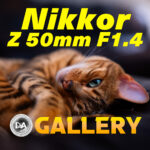
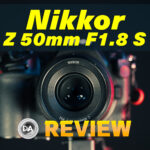

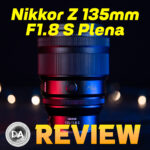
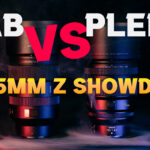

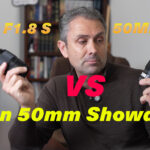



[…] noted in last year’s review of the Nikkor Z 50mm F1.4 that Nikon’s marketing strategy at the typical prime focal lengths (35mm, 50mm, and 85mm) is a […]
[…] noted in last year’s review of the Nikkor Z 50mm F1.4 that Nikon’s marketing strategy at the typical prime focal lengths (35mm, 50mm, and 85mm) is a […]